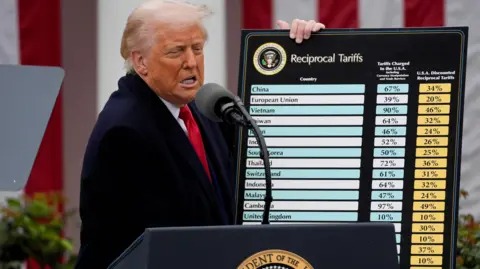In 2025 the world has seen a notable uptick in tariff actions — Tariff News especially by the Donald Trump‑administration in the United States. Key developments:
-
The U.S. announced a baseline 10% tariff on imports from most countries, coupled with additional country‑specific “reciprocal” tariffs based on trade deficits and other criteria. Profit by Pakistan Today+3ICC – Näringslivets världsorganisation+3ICC – Näringslivets världsorganisation+3
-
For example, Pakistan‑bound goods were initially slated at a 29% U.S. tariff, later adjusted downward to 19% after negotiations. Business Today+2Profit by Pakistan Today+2
-
In another major move, the U.S. and European Union (EU) struck a framework deal to cap many tariffs at ~15% for most goods, aiming to avert a full‑blown trade war. AP News
-
On the exporting side, countries like Pakistan are reforming their tariff regimes — for instance, Pakistan unveiled a draft national tariff policy for 2025‑30 aiming to simplify its structure to tiers of 0%, 5%, 10% and 15%. Arab News+1
Why It Matters
Tariff policy isn’t just about taxes on imports — it affects competitiveness, manufacturing, and even geopolitical alignment.
For Importing Countries (like the U.S.)
-
Tariffs are being used as tools to correct perceived trade imbalances, protect domestic industries (steel, copper, manufacturing) and exert pressure for trade concessions. ICC – Näringslivets världsorganisation+1
-
However, the heavy use of tariffs risks raising import costs for businesses and consumers, disrupting supply chains, and provoking retaliation. arXiv
For Exporting Countries
-
The changes mean that access to large markets like the U.S. becomes more uncertain and perhaps more costly.
-
For countries like Pakistan: while a reduction to a 19% U.S. tariff is a relative plus, other structural disadvantages (high input / energy costs, interest rates etc) may blunt the benefits. Profit by Pakistan Today+1
-
Simplification of tariff structures (as Pakistan proposes) is part of the strategy to become more competitive globally. Arab News+1
For Global Trade & Economy
-
The introduction of broad tariffs and reciprocal tariffs threatens to raise uncertainty globally. Businesses tend to delay investments when trade policy is unpredictable.
-
Trade flows may divert — instead of straightforward import‑export, countries may redirect to third‑party markets to avoid tariffs (so‑called “trade diversion”). arXiv
-
Since many economies are already dealing with inflation, supply‑chain issues, and slowing growth, added stress from tariffs could exacerbate vulnerabilities.
Focus on Pakistan: Opportunities & Challenges
Given your location (Pakistan), this part is especially relevant.
Opportunities
-
The U.S. reduction of the tariff on Pakistani goods to 19% (from previously higher levels) gives Pakistan a relatively better access point into the U.S. market compared with some competitors. Profit by Pakistan Today+1
-
Pakistan’s draft tariff policy signals serious intent to shift toward export‑led growth by reducing highest tariff slabs and eliminating additional customs duties/regulatory duties over time. Arab News+1
Challenges
-
Export sectors (especially textiles) still face high input and energy costs, high interest rates, and other structural bottlenecks which may limit how much benefit they can extract from better market access. Profit by Pakistan Today
-
Even with better tariff treatment, competition from regional neighbours (Vietnam, Bangladesh, etc) remains stiff — cost competitiveness will be key.
-
Implementation risk: reforming tariff schedules, simplifying duties, and phasing out old duties/regulatory regimes is complex and typically slow.
Outlook: What to Watch
Here are some indicators and policy moves that will be important to monitor in the coming months:
-
Whether the U.S. engages in further negotiations with major trade partners (India, EU, China) that could alter or roll back tariffs.
-
How Pakistan executes its tariff reform plans: timelines for elimination of additional duties, simplification of slabs, improvement of export infrastructure.
-
Changes in input cost structure in Pakistan (energy, interest rates, logistics) — improvements here will amplify benefits of better external access.
-
Whether other countries facing high tariffs will respond via retaliatory tariffs or strategic repositioning, which could reshape trade flows regionally.
-
Global reactions: markets, currencies, and investor sentiment often respond to major tariff announcements (risk of trade‑shock).
Conclusion
Tariff policy in 2025 is clearly entering a more aggressive phase — countries (notably the U.S.) are using tariffs not only as protection but as bargaining chips. For export‑oriented economies like Pakistan, this environment presents a mixed bag of greater access (in some cases) and heightened competition + structural demands.
The key takeaway: Tariff relief alone is not sufficient. To convert lower tariffs into real gains, exporters must deal with costs, efficiency, product quality, and market diversification. Meanwhile, policymakers must ensure that reforms are timely, transparent, and aligned with global trade dynamics.
